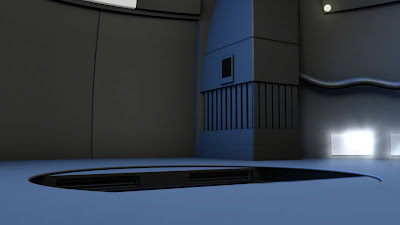Lighting design is definitely important for a piece of animation, not only improving the storytelling but also making the scene more realistic and believable. However I do not have enough time to render Global illumination and Final Gethering as I want to put more focus on my research and practice working rather than rendering. So I need to find another way to improve its effect in term of Ambient Occlusion, like the picture below.
According to Wikipedia, http://en.wikipedia.org/wiki/Ambient_occlusion, Ambient occlusion is a shading method used in 3D computer graphics which helps add realism to local reflection models by taking into account attenuation of light due to occlusion. Ambient occlusion attempts to approximate the way light radiates in real life, especially off what are normally considered non-reflective surfaces.
Ambient Occlusion
diffuse only
combined ambient and diffuse
Obviously there are more details and more beautiful depth after combination.
Obviously there are more details and more beautiful depth after combination.
Ambient occlusion is related to accessibility shading, which determines appearance based on how easy it is for a surface to be touched by various elements (e.g., dirt, light, etc.). It has been popularized in production animation due to its relative simplicity and efficiency. In the industry, ambient occlusion is often referred to as "sky light."
The ambient occlusion shading model has the nice property of offering a better perception of the 3d shape of the displayed objects. This was shown in a paper where the authors report the results of perceptual experiments showing that depth discrimination under diffuse uniform sky lighting is superior to that predicted by a direct lighting model.
The occlusion
where
In addition to the ambient occlusion value, a "bent normal" vector
In this example, light may reach the point p only from the left or right sides, but the bent normal points to the average of those two sources, which is, unfortunately, directly toward the obstruction.
Reference:



No comments:
Post a Comment